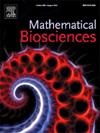Dynamics of COVID-19 based on spontaneous individual behaviors of vaccination
IF 1.8
4区 数学
Q2 BIOLOGY
引用次数: 0
Abstract
As the -19 vaccine becomes widely available, human self-protection awareness is gradually weakening. However, the epidemic still continue to erupt repeatedly in various areas. Therefore, it is necessary to reveal the relationship between vaccination and individual spontaneous behaviors and their impact on the epidemic. Based on an epidemic dynamical model, a novel imitation dynamics model is established by integrating the dynamic changes of individual spontaneous behaviors before and after vaccination. Unvaccinated people are more likely to choose long-term individual spontaneous behavior change strategies to reduce the risk of infection. While the vaccinated individuals are more likely to choose multiple, short-term strategies of individual spontaneous behavior changes. In the case of low vaccine protective efficacy, the changes of individual spontaneous behavior will drive several small-scale outbreaks at the same time. Besides, when the value of is 4.5 and vaccination rate is 0.45, keeping the vaccine protection efficacy above 76.3% can not only complement the epidemic recurrence caused by behavioral changes, but also effectively reduce the epidemic peak and therefore quickly control the epidemic. Our results reveal the underlying mechanisms between vaccination, vaccine protection efficacy, individual spontaneous behaviors of the two groups of people and the -19 epidemic. Vaccination and its protective efficacy effectively have a reciprocal effect with individual behavior changes, so as to control the epidemic quickly and effectively.
基于自发接种个体行为的COVID-19动态
随着新冠肺炎疫苗的普及,人类的自我保护意识逐渐减弱。然而,这一流行病仍然在各个地区反复爆发。因此,有必要揭示疫苗接种与个体自发行为之间的关系及其对疫情的影响。在SVEIR流行病动力学模型的基础上,通过整合疫苗接种前后个体自发行为的动态变化,建立了一种新的模仿动力学模型。未接种疫苗的人更有可能选择长期的个人自发行为改变策略来降低感染风险。而接种疫苗的个体更有可能选择多种短期的个体自发行为改变策略。在疫苗保护效果较低的情况下,个体自发行为的改变会同时引发多起小规模疫情。此外,当R0值为4.5、疫苗接种率为0.45时,保持疫苗保护效力在76.3%以上,既能弥补行为改变引起的疫情复发,又能有效降低疫情高峰,从而快速控制疫情。我们的研究结果揭示了疫苗接种、疫苗保护效果、两组人的个体自发行为与COVID-19流行之间的潜在机制。疫苗接种及其防护效果与个体行为改变有效相互作用,才能快速有效地控制疫情。
本文章由计算机程序翻译,如有差异,请以英文原文为准。
求助全文
约1分钟内获得全文
求助全文
来源期刊

Mathematical Biosciences
生物-生物学
CiteScore
7.50
自引率
2.30%
发文量
67
审稿时长
18 days
期刊介绍:
Mathematical Biosciences publishes work providing new concepts or new understanding of biological systems using mathematical models, or methodological articles likely to find application to multiple biological systems. Papers are expected to present a major research finding of broad significance for the biological sciences, or mathematical biology. Mathematical Biosciences welcomes original research articles, letters, reviews and perspectives.
 求助内容:
求助内容: 应助结果提醒方式:
应助结果提醒方式:


